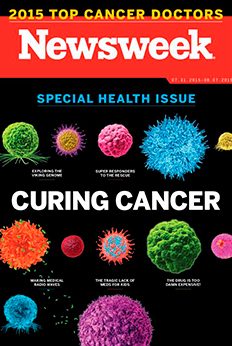Dr. Finger’s latest research, co-authored with Kimberly J. Chin and Ekaterina A. Semenova, was published in the European Journal of Ophthalmology. It was made available in PDF and EPUB eBook formats earlier this year. Download it below.
Download a PDF of This Study
Here is the opening summary of this research article titled, Intravitreal Anti-VEGF Therapy For Macular Radiation Retinopathy: A 10-year Study
Purpose: To report long-term experience with intravitreal anti–vascular endothelial growth factor treatment for radiation maculopathy.
Methods: From 2005-2015, 120 consecutive patients underwent intravitreal anti-VEGF therapy for radiation maculopathy. Inclusion criteria included a diagnosis of uveal melanoma treated with plaque radiotherapy and subsequent macular radiation vasculopathy (exudate, retinal hemorrhage, intraretinal microangiopathy, neovascularization, edema). Anti-VEGF therapy involved continuous injections in 4- to 12-week intervals with doses of 1.25 mg/0.05 mL, 2.0 mg/0.08 mL, 2.5 mg/0.1 mL, or 3.0 mg/0.12 mL of bevacizumab as well as 0.5 mg/0.05 mL or 2.0 mg/0.05 mL of ranibizumab. Goals were maintenance of visual acuity and normative macular anatomy. Safety and tolerability (retinal detachment, hemorrhage, infection), visual acuity, central foveal thickness on optical coherence tomography (retinal detachment, hemorrhage, infection), visual acuity, central foveal thickness on optical coherence tomography imaging, and clinical features of radiation maculopathy were analyzed.
Results: Progressive reductions in macular edema, hemorrhages, exudates, cotton-wool spots, and microangiopathy were noted. At last follow-up, 80% remained within 2 lines of their initial visual acuity or better, with a mean treatment interval of 38 months (range 6-108 months). Kaplan-Meier analysis of the probability of remaining within 2 lines of initial visual acuity was 69% at 5 years and 38% at 8 years of anti-VEGF therapy. Discontinuation of therapy was rare. Relatively few acute or long-term side effects were noted, allowing for good long-term patient accrual.
Conclusions: Continuous intravitreal anti-VEGF therapy in patients with radiation maculopathy was well-tolerated and preserved vision. In most cases, reductions or resolution of retinal hemorrhages, cotton-wool spots, and retinal edema were noted for up to 10 years.
Download a PDF of This Study
 Dr. Paul Finger has been named one of the top cancer doctors of 2015 in the United States by Newsweek.
Dr. Paul Finger has been named one of the top cancer doctors of 2015 in the United States by Newsweek.








